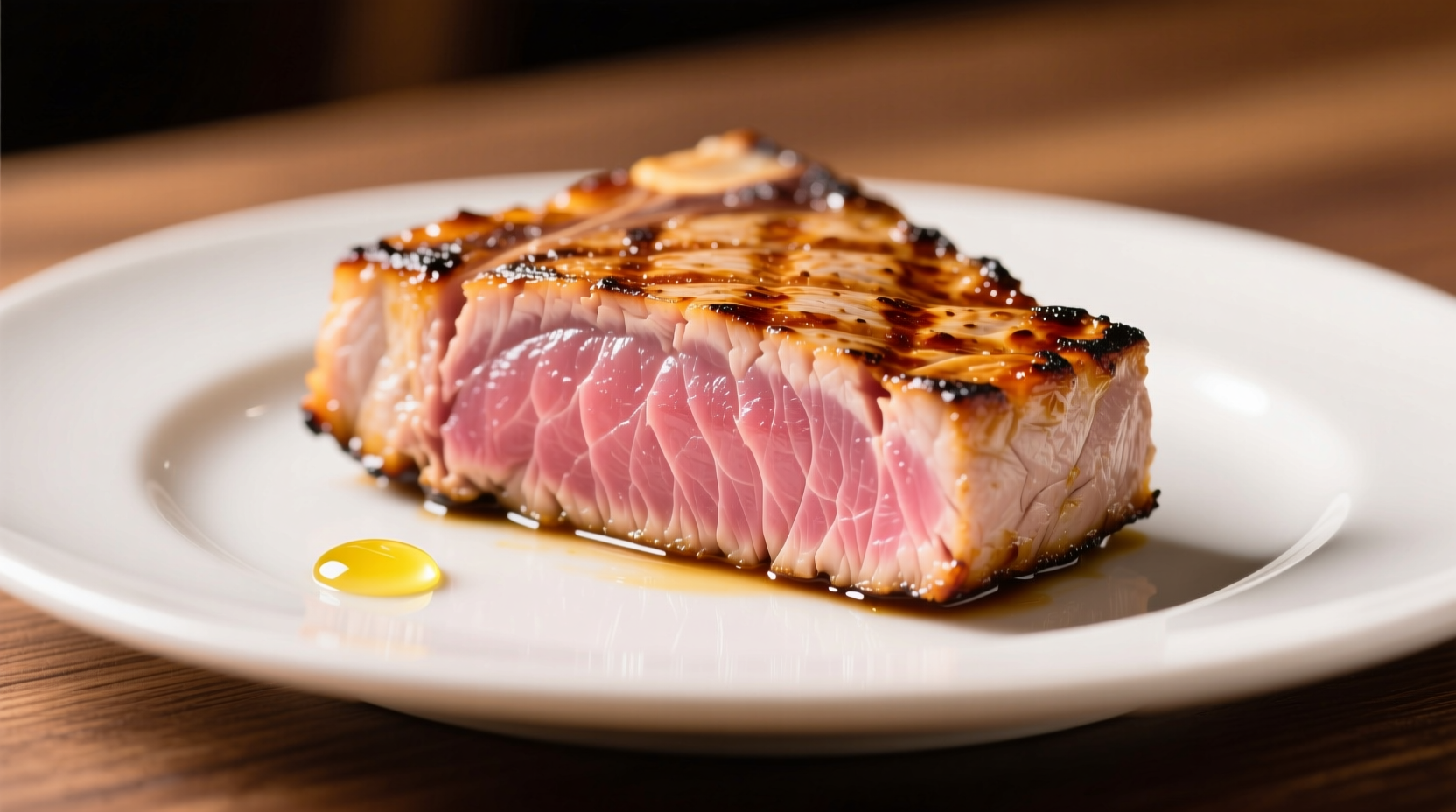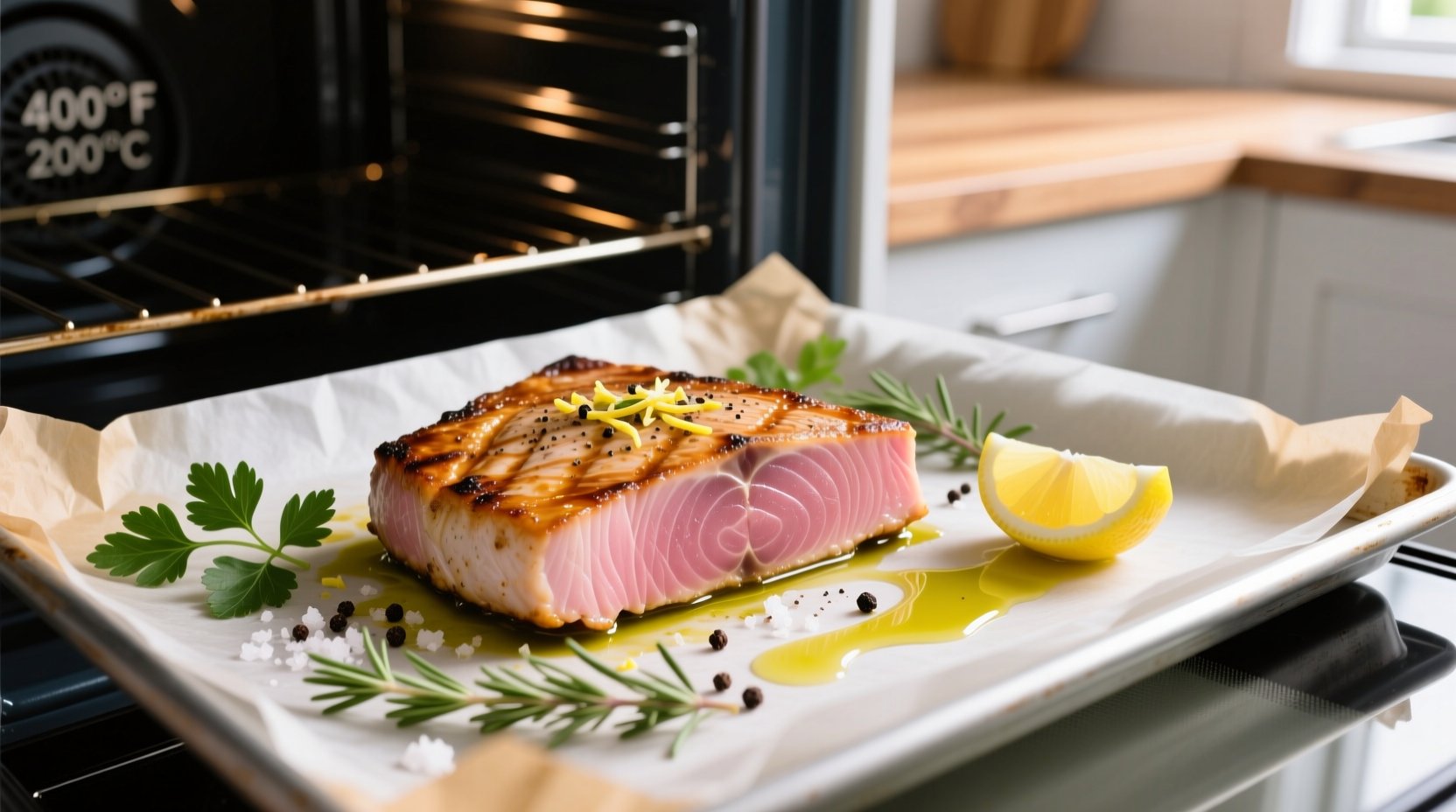Why Oven-Roasted Tuna Steak Beats Pan-Frying
Professional chefs increasingly favor oven-finishing for tuna steaks because it delivers consistent doneness without overcooking edges. Unlike pan-searing alone which creates a significant gray band of overcooked fish, the oven method maintains a vibrant pink center throughout the entire thickness. This technique works particularly well for thicker cuts (1½ inches or more) where precise temperature control is critical.
Essential Preparation Checklist
Before heating your oven, gather these components for success:
- Fresh tuna steaks: 1½ inches thick, preferably sashimi-grade from reputable sources
- Dry brine: 1 tsp kosher salt per pound, applied 20 minutes before cooking
- High-heat oil: Avocado or refined coconut oil (smoke point >400°F)
- Thermometer: Instant-read digital thermometer (critical for accuracy)
- Rimmed baking sheet: With wire rack for air circulation

Step-by-Step Cooking Process
1. Temperature Equilibrium (15 minutes)
Remove tuna from refrigerator 15 minutes before cooking. Cold fish cooks unevenly, creating a tough exterior while the center remains raw. Pat thoroughly dry with paper towels – moisture is the enemy of proper searing.
2. Precision Searing (4 minutes)
Heat 1 tablespoon oil in oven-safe skillet over medium-high until shimmering (about 2 minutes). Place tuna in skillet away from you to prevent oil splatter. Sear undisturbed for 2 minutes until deep golden crust forms. Flip and sear second side for 2 minutes.
3. Controlled Oven Finish (6-8 minutes)
Transfer skillet directly to preheated 400°F oven. Roast until internal temperature reaches:
| Doneness | Internal Temperature | Texture Description |
|---|---|---|
| Medium-rare | 120-125°F | Bright red center, warm throughout |
| Medium | 130-135°F | Pink center, slightly firm |
| Medium-well | 140-145°F | Light pink center, firm texture |
According to the FDA's Seafood Guidelines, fish should reach 145°F for safety, but high-quality tuna can be safely consumed at lower temperatures when handled properly. Always verify with a thermometer – never guess.
Critical Technique Considerations
Oven-roasting tuna requires understanding these key variables:
- Thickness matters: Adjust cooking time by 1 minute per ¼ inch variation. A 2-inch steak needs approximately 10 minutes in oven.
- Residual cooking: Tuna continues to cook 5-7°F after removal from oven (carryover cooking). Remove at 5°F below target temperature.
- Rack positioning: Place oven rack in upper third of oven for optimal heat circulation around the skillet.
- Resting time: Let tuna rest 3-5 minutes before slicing to redistribute juices.
Flavor Pairing Recommendations
Complement your perfectly cooked tuna with these professional pairings:
- Asian-inspired: Wasabi aioli, pickled ginger, sesame seeds
- Mediterranean: Lemon-herb vinaigrette, capers, roasted cherry tomatoes
- Southwest: Avocado salsa, black bean puree, chipotle drizzle
Avoid overpowering the delicate tuna flavor – seasoning should enhance, not mask. Professional kitchens typically use no more than 3-4 complementary flavors in tuna preparations.
Troubleshooting Common Mistakes
Prevent these frequent errors when cooking tuna steak in oven:
- Overcooking: Tuna becomes dry and tough beyond 140°F. Always use thermometer and remove early.
- Insufficient searing: Creates pale appearance and poor crust formation. Ensure oil is properly heated before adding fish.
- Cold pan transfer: Moving tuna from cold pan to oven causes temperature shock and uneven cooking.
- Slicing too soon: Cutting before resting releases precious juices onto the plate.
Storage and Reheating Guidelines
Properly stored, cooked tuna maintains quality for 2-3 days:
- Refrigeration: Cool completely, then store in airtight container with parchment between slices
- Reheating: Best enjoyed cold in salads or gently warmed in 250°F oven for 5-7 minutes
- Freezing: Not recommended – texture deteriorates significantly upon thawing
Professional Chef's Final Tip
"The difference between good and exceptional oven-roasted tuna comes down to temperature precision," explains Antonio Rodriguez, culinary expert with Michelin-starred kitchen experience. "Invest in a quality instant-read thermometer and calibrate it monthly. When cooking expensive fish like tuna, guessing costs more than the thermometer ever will."











 浙公网安备
33010002000092号
浙公网安备
33010002000092号 浙B2-20120091-4
浙B2-20120091-4